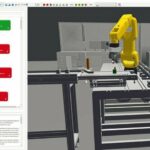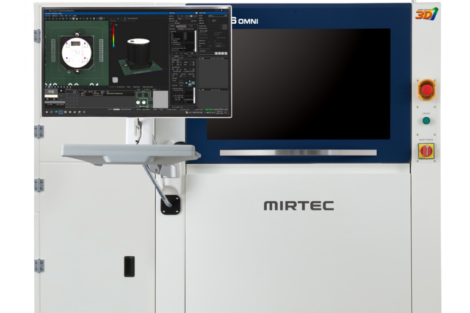Using robots is almost always worthwhile for companies. They can reduce labour costs, relieve employees, and make production more flexible – particularly as batch sizes become smaller and production processes more individual. Another major advantage of robots or cobots is that they work without breaks or fatigue, thereby increasing product quality and reducing scrap.
Almost all processes can be automated using modern robot systems. Robots are often used for simple, dirty, monotonous, physically demanding, and even dangerous tasks. With the right hardware and, more importantly, software, however, highly complex or demanding tasks can also be tackled using ‘Advanced Robotics’. Examples of such applications include the assembly of flexible and bendable components such as cables, wires, or hoses or force-controlled surface processing.
In line with the no-code/low-code trend, various software solutions on the market now enable graphical (and therefore simplified) programming. The advantage of this is that no special programming skills are required. The portfolio of solutions in this area ranges from manufacturer specific to independent offerings that can be used to program robots from different manufacturers using just one single piece of software. In the latter case, experts recommend using tools that automatically generate native robot code for the particular robot controller instead of controlling the robot arm via a separate IPC. In the former case, users are able to remain flexible when it comes to adjustments or optimizations during operation because they can continue to program the robot using line code (even without using the software), and thus avoid a lock-in effect.
Regardless of whether you are using external engineering tools or line code, there are obstacles on the path to robot-based automation that users often underestimate. Here are some tips on how to avoid three of the most important stumbling blocks.
Programming effort
The time required to program an application is not usually underestimated, but there are other pitfalls during this phase. These include process tolerances and variances that have not been taken into account; the increased complexity of incorporating sensors, or establishing communication between the robot and a PLC. Programming a system is often a tailor-made and complex process that is difficult to adapt. Programmers often have their own style, which can make the resulting code or program difficult for other programmers to understand and/or modify. In this case, the no-code/low-code solutions currently on the market can better support users. Thanks to pre-defined function blocks, programs can be constructed and structured in a clear and understandable manner. Using the right software, process tolerances and variances can also be automatically compensated, analyzed, and optimized. If the corresponding interfaces are already integrated, the effort required to connect sensors or set up a PLC communication is also significantly reduced.
Effort during commissioning
A rule of thumb states that the cost of the robot itself is only about one third of the initial cost of the cell, and experience reveals that around 45 percent of typical costs are incurred during ramp-up. This is because users often underestimate the time required for commissioning. Although the system is programmed offline and simulated in advance, discrepancies between theory and practice often only become apparent during commissioning. This means that, despite preparation, the process can take significantly longer than planned, and necessary adjustments can quickly become expensive. Factors that were not apparent during digital preparation may need to be addressed on-site during commissioning. This makes this phase difficult to calculate.
Using consistent tools, ramp-up can be implemented in a controlled manner, and without a significant loss of time – ensuring this phase does not become a cost driver. It is important to combine simulation, programming, sensors, and data analysis in one single software package. This way, the engineering chain is consistent without the user having to compromise on functionality. This makes it faster, more flexible and easier to make changes and adjustments. With automatically-generated code and the ability to transfer teach points back from the robot into the software, this kind of solution can integrate seamlessly into existing commissioning and maintenance processes. It also offers the greatest flexibility in terms of online and offline programming, allowing the user to choose the easiest option to complete the respective task.
Changes during cell lifecycle
Over the system runtime, various changes in general conditions may occur that necessitate adjustments in programming. These could be vibrations and shocks caused by forklifts or other machines; wear and tear of tools; replacement parts that react differently from previous components or changes in workpiece batches, available space, or operating personnel. Lighting or temperature fluctuations, or the contrast between a cold-started and warmed-up robot can also have an impact.
Software that standardizes and simplifies programming allows the user to react quickly and flexibly to these and other changes in conditions and to make the necessary adjustments to the program. A worker can ensure they are best prepared by using a tool that is able to make changes or visualize consequences in terms of forces, cycle times, defects and quality even earlier.
Productronica, Booth B4.404













